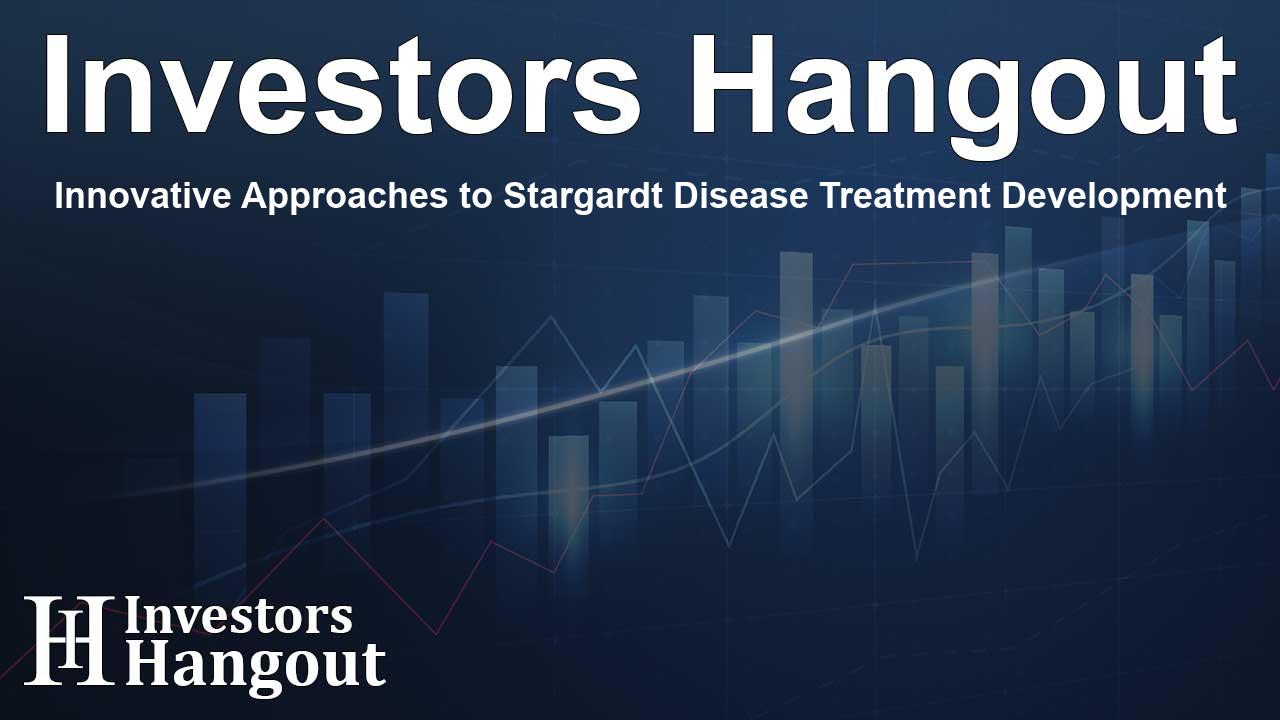Innovative Approaches to Stargardt Disease Treatment Development

Exploring Innovative Approaches in Stargardt Disease Treatments
As interest in developing effective therapies for Stargardt disease continues to grow, advancements in gene therapy stand out. These innovative strategies focus on targeting the genetic mutations responsible for this inherited eye disorder, potentially leading to groundbreaking solutions that could halt or reverse vision loss.
Insights from the Stargardt Disease Pipeline Report
The Stargardt disease pipeline report reveals an active landscape, showcasing over 20 companies dedicated to creating more than 25 therapeutic options. Noteworthy organizations such as Kubota Vision, Nanoscope Therapeutics, and Ocugen are at the forefront of developing new treatments, reflecting the collaborative effort towards enhancing patient care.
Key Developments in the Stargardt Disease Pipeline
Numerous promising therapies are currently in various stages of clinical trials. For instance, Emixustat and Gildeuretinol are among the notable treatments that aim to address the underlying causes of Stargardt disease. Clinical trials are critical, and up-and-coming candidates like MCO-010 and OCU410ST have shown promising results in early testing phases.
Significant Milestones in Clinical Trials
Recent announcements underline the urgency and commitment of firms tackling Stargardt disease. For example, in a significant move, Nanoscope Therapeutics announced an End-of-Phase II meeting with regulatory authorities, paving the way for the Phase III registration trial for MCO-010. Likewise, Ocugen reported successful completions in its clinical trials for the OCU410ST gene therapy, marking a crucial step towards potential approval.
Emerging Therapies and Their Mechanisms of Action
Understanding the mechanisms driving these therapies aids in grasping their potential. Many are focused on correcting or compensating for the defective gene function that leads to vision loss. Therapies like Tinlarebant leverage novel approaches to combat the biochemical pathways involved, representing a beacon of hope for those affected.
Future Directions in Stargardt Disease Treatment
The future of Stargardt disease treatment appears promising, with companies continuously innovating and exploring varied therapeutic avenues. Treatments like REV-0100 are entering preclinical trials, indicating an exciting trajectory for the development of effective solutions.
Community and Collaborative Impact
In addition to corporate efforts, collaborations between universities and biotech firms are crucial. Such partnerships enhance research capabilities, drive innovative solutions, and expedite the therapeutic development process. The involvement of academic institutions creates a robust ecosystem for discovering novel therapeutic agents.
Stargardt Disease: A Closer Look at the Condition
Stargardt disease is a genetic disorder characterized by gradual vision loss, primarily affecting the central vision, which can impair daily activities like reading. Most often diagnosed in children and young adults, this condition arises from mutations in the ABCA4 gene, culminating in accumulation of lipofuscin—a toxic byproduct in the retinal cells.
Symptoms and Diagnosis
Common symptoms include blurred or distorted vision and difficulties in low-light environments, with progression varying by individual. Diagnosing Stargardt disease typically involves comprehensive eye exams and, often, genetic testing to confirm the presence of mutations.
Current Management Strategies and Lifestyle Adjustments
While there's currently no cure for Stargardt disease, management strategies can help mitigate its impact. Patients are encouraged to use low-vision aids and minimize UV exposure to protect their eyes from further damage. Research continues to evolve towards finding effective treatments, including gene and stem cell therapies.
Frequently Asked Questions
What is Stargardt disease?
Stargardt disease is a hereditary eye condition leading to progressive vision loss, primarily affecting central vision.
How is Stargardt disease diagnosed?
Diagnosis typically involves tests like visual acuity assessment, imaging of the retina, and genetic testing to confirm genetic mutations.
Are there any effective treatments for Stargardt disease?
Currently, there are no definitive cures, but ongoing research focuses on developing gene therapies and other therapeutic strategies.
What are the common symptoms of Stargardt disease?
Symptoms include blurry central vision, difficulty in low light, and progressive vision loss.
How can patients manage Stargardt disease?
Management includes using assistive devices for vision and protective measures against UV light exposure to minimize vision deterioration.
About Investors Hangout
Investors Hangout is a leading online stock forum for financial discussion and learning, offering a wide range of free tools and resources. It draws in traders of all levels, who exchange market knowledge, investigate trading tactics, and keep an eye on industry developments in real time. Featuring financial articles, stock message boards, quotes, charts, company profiles, and live news updates. Through cooperative learning and a wealth of informational resources, it helps users from novices creating their first portfolios to experts honing their techniques. Join Investors Hangout today: https://investorshangout.com/
Disclaimer: The content of this article is solely for general informational purposes only; it does not represent legal, financial, or investment advice. Investors Hangout does not offer financial advice; the author is not a licensed financial advisor. Consult a qualified advisor before making any financial or investment decisions based on this article. The author's interpretation of publicly available data shapes the opinions presented here; as a result, they should not be taken as advice to purchase, sell, or hold any securities mentioned or any other investments. The author does not guarantee the accuracy, completeness, or timeliness of any material, providing it "as is." Information and market conditions may change; past performance is not indicative of future outcomes. If any of the material offered here is inaccurate, please contact us for corrections.